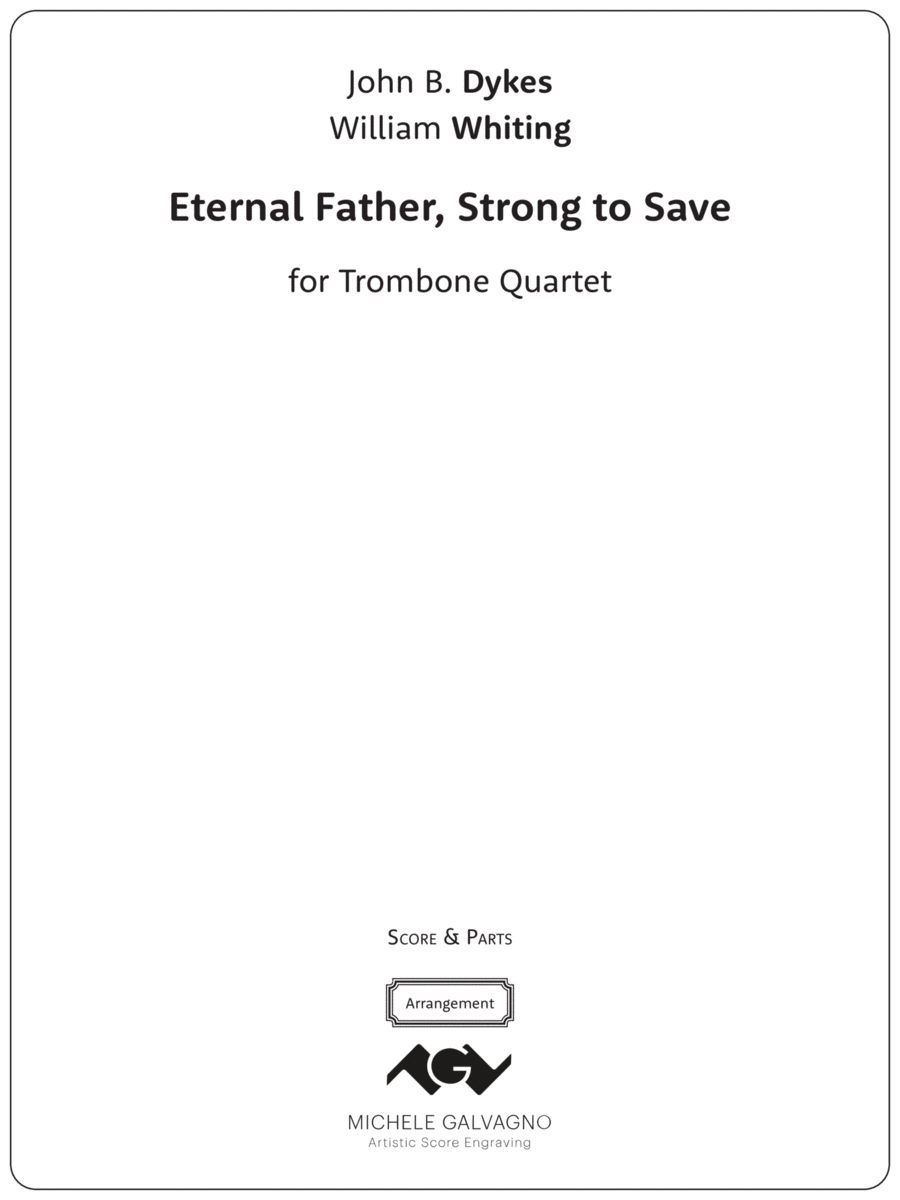Trombone - Level 2 - Digital Download SKU: A0.1112600 Composed by John Bacchus Dykes. Arranged by Michele Galvagno. 19th Century,Christian,Patriotic,Sacred,Traditional. 14 pages. Artistic Score Engraving di Galvagno Michele #714610. Published by Artistic Score Engraving di Galvagno Michele (A0.1112600). Eternal Father, Strong to Save is a British hymn traditionally associated with seafarers, and was first written in 1860 by William Whiting (1825â1878), an Anglican churchman from Winchester. According to his recount, Whiting grew up near the ocean and, at the age of thirty-five, had felt his life spared by God when a violent storm nearly claimed the ship he was travelling on. This instilled in him a belief in God's command over the rage and calm of the sea. The music associated with it was written by John B. Dykes (1823â1876), another Anglican clergymen and composer of the music for nearly three hundred hymns. This edition comes in several arrangements for multiple ensembles. At the moment of the first edition it contains the original choir version (with the 1861 lyrics), a voice and piano version, and arrangements for string, cello, trombone, horn, woodwind, brass, and saxophone quartets. The cello, trombone, and horn quartet versions are slightly more elaborated. Additional versions will be created upon request, contact me to know more. This arrangement is dedicated to Martin Smith.
